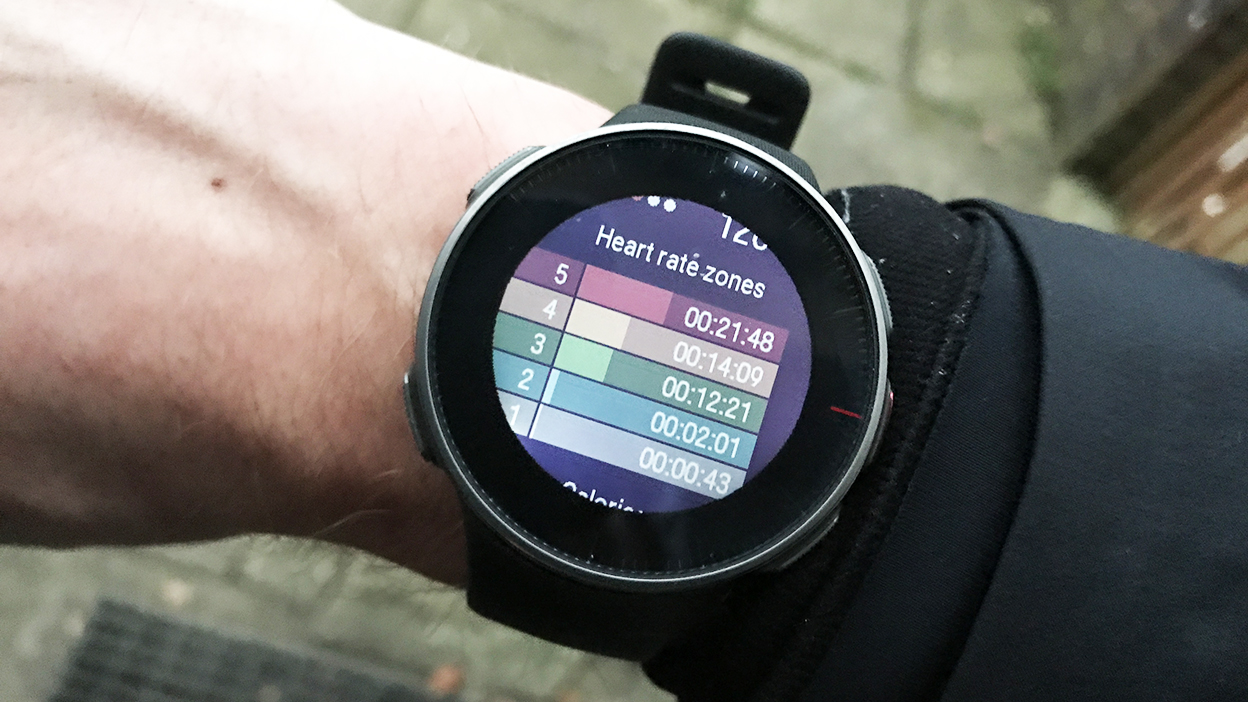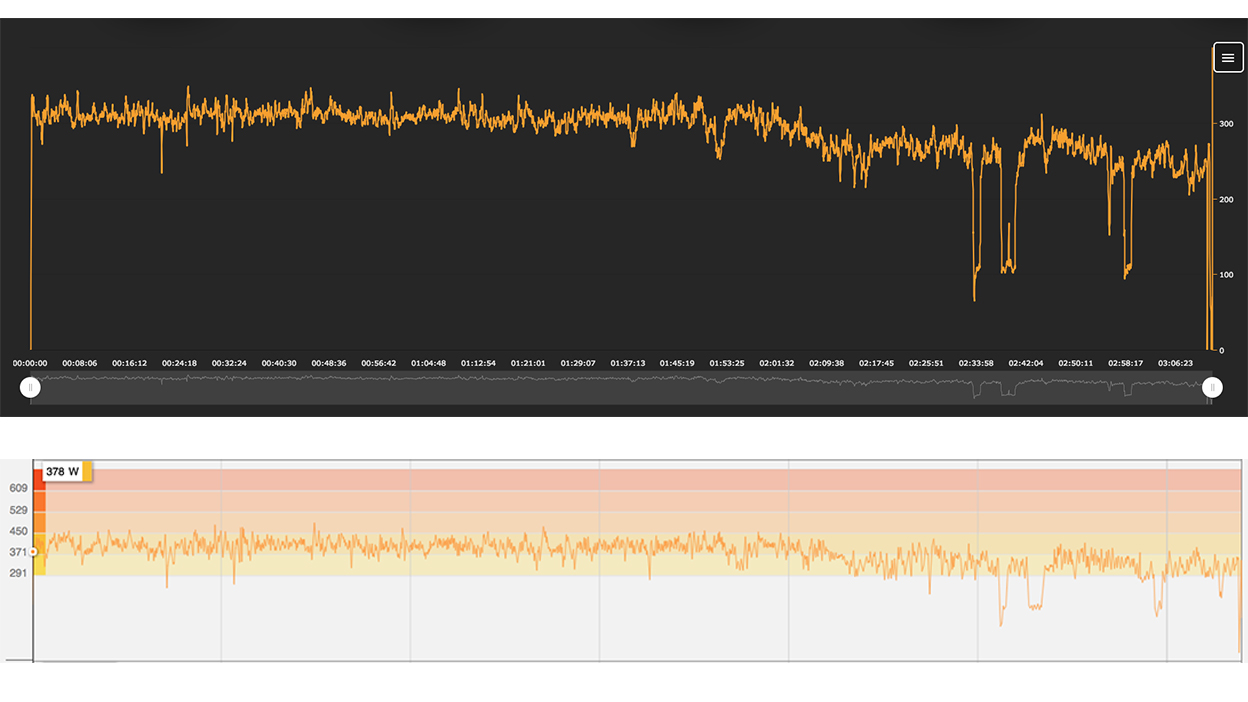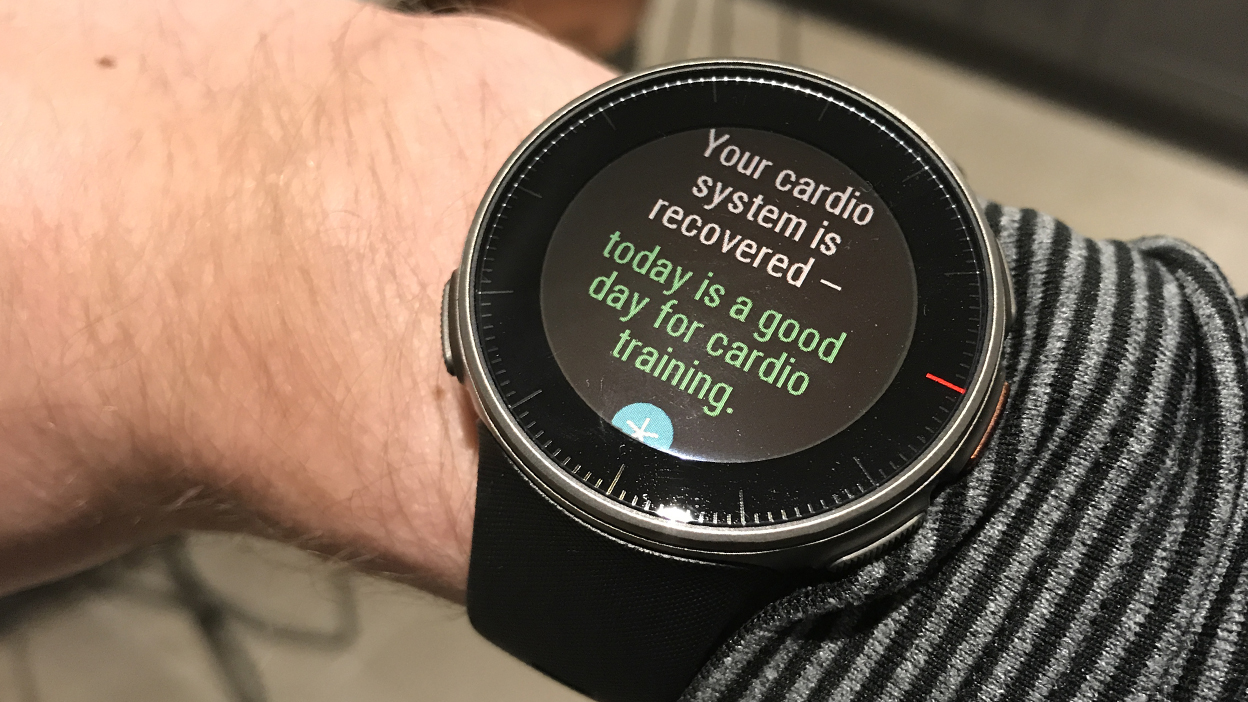Why you can trust TechRadar
Features
- Supports 130 different sports
- Displayed stats can't be tweaked on the watch
- Post-session information is very detailed
Let’s start with the basics. The Polar Vantage V supports 130 different sports with individual sport profiles and algorithms to track each activity. As you’d expect, running, swimming and cycling feature prominently, plus there’s a dedicated triathlon mode. There’s also everything from CrossFit and strength training to hiking and mountain biking.
We didn’t get the chance to test all of the sport modes, but we’re told that Polar has worked hard to tailor the algorithms for each sport to allow for more accurate heart rate readings.
You can load up to 20 sport profiles on the Vantage V at any one time and you can customize the stats displayed during a session via the Polar Flow web service or smartphone app.
We’d have liked the option to tweak these on the watch as you can with the likes of the Garmin Fenix 5 Plus, you know, for those race mornings where you realize you forgot to set your device.

The level of detail you get on the watch itself after a training session is second to none though. Easy to read stats for everything with graphs for heart rate, pace and power zones are all viewable on the watch.
Though there is also plenty of additional data, training insights and tools to be found on the Polar Flow app and the web service, which are both as good as any other tools out there.
Improved optical heart rate?
- At least as accurate as other wrist-based options
- Still not a match for a chest strap
One of the Vantage V’s big claims is that it’s the most accurate wrist-based optical heart rate watch on the market, thanks to what Polar calls its Precision Prime sensor fusion technology.
Sign up for breaking news, reviews, opinion, top tech deals, and more.
This combines optical heart rate measurements – tracked with 9 LEDs in two colors – that can reach deeper into the tissue, with 3D acceleration data and skin contact measurements, which recognize when losses in readings might be attributed to movement or the loss of contact – not the fact your heart suddenly stopped.
Polar has also also introduced post-workout cleaning of the heart rate readings, whereby the watch can identify anomalies in the data retrospectively and adjust your stats in the Polar Flow partner tools to give a truer picture of your data during a session.

We tested the optical heart rate monitor on several different training runs against the Garmin Fenix 5 Plus optical heart rate and a Fenix 5 using a chest strap.
One session was an interval session with two sets of 600 meters. Our average heart rate according to Garmin’s optical sensor was 103BPM versus 108BPM on the Vantage V. Our max on Garmin only hit 141BPM against a 168BPM on the Polar.
Based on the session, we’d suggest the latter feels much more accurate against our perceived effort. A tick for Polar’s new built-in monitor.

However, during a longer run session where we compared the Fenix 5 with a chest strap to Polar’s optical sensor we ran into some issues. During a 2:15 hour run that included a mix of easy running with three sets of 15 minutes at marathon pace, we found quite a sizable difference in the readings.
Garmin had our average at 155BPM and max at 182BPM compared to 147BPM average and 174BPM max on the Polar. If you look at the zone breakdowns in the graphics above, you’ll also see that Garmin showed we ran a far higher proportion at a higher intensity. Garmin put 45% of our run time in the tempo or threshold zone versus just 30% on the Polar.
Overall Garmin’s chest strap read higher than Polar’s wrist-based monitor and in this instance the Garmin more closely matches how that run felt.
So, while we’d say that Polar’s optical solution here is as good as, if not better, than others on the market, we’re still not 100% convinced it’s time to ditch the chest strap. Nor for that matter is Polar, which still recommends using an H10 chest strap for the heart rate tests where accuracy is paramount.
For swimmers, the Polar Vantage V’s optical heart rate will track your BPM in the water, while there’s also GPS-support for open water swimming.
Running power
- The first watch to offer running power from the wrist
- Consistent in its power readings
Perhaps the biggest headline is that the Polar Vantage V was the first watch to offer running power tracking from the wrist. We’ve seen footpods such as the Stryd sensor and Garmin’s HRM chest straps offer power tracking for a while, but this was the first time you can do it accessory-free with a watch.
Long used in cycling as a more consistent way to measure the true output and work rate of an athlete, power will be a new metric to many runners. Measured in Watts, in a nutshell it offers a new way to track performance that’s more useful than heart rate or pace alone.
Why? Well whereas heart rate is affected by many external factors such as stress, sleep, caffeine – and has a lag during workouts – power responds in real time. Whereas pace as a metric is difficult to use if you’re running on hilly or mixed terrain, power can be used to provide a consistent effort level.

Polar’s power output is based on an algorithm that takes three main readings. The first is the change of altitude gradient, tracked via built-in barometer. The other two are speed and how fast your speed is changing, and GPS is used to measure these. The result is then delivered in Watts per kilogram of body mass.
We compared the Polar to the Stryd footpod for comparison during a marathon. Polar’s power was often up to 100 Watts higher than the Stryd sensor. Polar had our maximum power at 488 Watts and our average power at 374 Watts. Stryd put it at 345 Watts and 287 Watts, respectively.
It’s hard to compare accuracy here as different brands define and measure power in different ways. What’s important though is that the device is consistent. Over the months that we tested the Polar against Stryd on the track and roads, flat and hills, at different intensities, we found the discrepancy was consistent.
In this sense you can comfortably use Polar’s wrist power as an effective tool for benchmarking training and monitoring progress.

If we had one criticism, it was that it was often hard to run to a specific power zone, as the readings were prone to fluctuation from stride to stride. This is also true of Stryd and setting the power readings to take a 30 second average helped even things out somewhat.
Polar’s GPS-based/barometric power tracking means you don’t need another accessory, but there are a couple of big drawbacks with this way of calculating power. For a start, you can’t track your running power indoors on a treadmill as there’s no way to get the elevation gain and distance information required.
Also, if the GPS goes haywire, which it appeared to do from time to time in our tests, the power readings are affected. This isn’t true for a footpod like Stryd that uses motion sensors to estimate power.
GPS tracking and pace
- Sometimes showed inaccurate pace during runs
- Seemed to be corrected post-run
While we’re on the subject of GPS, while most of our runs against the Garmin tended to finish within 0.05 of a mile of each other in the post-run stats, the Vantage V did have some pacing issues mid-run.
There were several occasions while running intervals at specific paces that the Polar readings jumped around from anywhere between 6:00 min/miles to 11:00 min/miles despite the fact we’d definitely maintained the same stride.
Even though the stats seemed to be corrected in the post-run Flow overview, this made it very difficult to accurately pace sessions, for example, an 8 x 800m at marathon pace. This wasn’t always the case but happened often enough to be frustrating.
Running dynamics
- Cadence is tracked accurately
- No vertical oscillation or ground contact time
The Polar Vantage V lacks some of the insights you’ll get from a Garmin watch paired with its HRM Run or Tri chest straps. Cadence is tracked from the wrist but that’s all the running dynamics that you get. There’s no vertical oscillation or ground contact time.
On cadence it matched both the Garmin and the Stryd footpod very closely, with only a few BPM difference.

Training Load Pro and Recovery Load Pro
- Can assess workout impact and recovery
- Uses this data to suggest how hard you should train
- Isn't a replacement for a human coach
When you’re done training, the Polar Vantage V has a suite of tools to help you assess the impact your workout has had on your fitness and when it’s time to go again.
Training Load Pro gives you individual readings for the different types of load you might put on your body during training. This includes muscular load, perceived load and cardiovascular, providing a holistic view of training load.
You can also see at a glance how hard your session was in comparison to the average of your sessions from the past 90 days and a description of the training effect of that session, for example if it was a tempo training run.
In terms of recovery, the Vantage V analyzes your recent training data and tells you whether today is a good day to train hard or whether you might consider backing off and do a lighter session.

To unlock all of the Recovery Pro features you need to do an orthostatic test at least three times a week.
This has to be done using a Polar H10 chest strap, as this is the only accurate way to take the necessary Heart Rate Variability (HRV) readings needed, and involves lying down for 3 minutes followed by standing for 3 minutes. This gives the watch important insights into how well your system has recovered.
There are also two new readings Strain – which roughly equates to fatigue – and Tolerance – which looks at the average training load over the past 28 days.
What’s really strong here is that the V doesn’t just give you the numbers, it interprets them and makes recommendations on how to respond. For example, if the ratio between strain and tolerance goes above 1.5 that’s when you’re at higher risk of injury and the V might suggest taking a rest day.
In theory this is all very exciting, particularly if you’re someone who takes training seriously.
We also love that the Vantage V asks questions to help capture the important subjective side to training. Immediately after a session, this includes your RPE (Rated Perceived Exertion), and how you felt during training.

In the morning it will ask you how you slept and if your muscles feel sorer or you generally feel more strained. This all helps to create a more holistic view of how your training is affecting you.
So while monitoring training load and recovery isn’t new, Polar has tried to take it to a new level gathering more distinct information than we’ve previously seen and turning that into proper, actionable advice on what to do with that data.
What you get is a step towards the advice you’d get from a human coach, however, while we applaud the theory and the effort, this still isn’t perfect.
Some of the recovery and training status feedback can be a bit confusing and even appear contradictory. For example, after one quite intense training session, the recovery feedback gave us a big green thumbs up ‘Go for it’, while the written training advice suggested that we’d been training harder than usual and continuing at this level could lead to risk of illness or injury.

To be fair to Polar, this is where things get a little more difficult. It’s also why we’ll need coaches for a long time to come. What the watch can’t quite master are the nuances in a training program that mean sometimes it’s desirable to be overreaching for a period of time.
However, this information does serve as an early warning to keep an eye that you’re not overreaching too much over a period of time.
Sometimes the feedback we got was spot on. On days where we were feeling a little strained after a big session, the Vantage V recommended a lighter day. So the data matched our subjective assessment of our recovery state.
A big part of this was making sure we did the regular orthostatic tests that use HRV analysis to assess if our system is recovered or not. The watch matched our feeling most when we did these tests daily.
Current page: Fitness and features
Prev Page Introduction, design and interface Next Page Battery life and verdict